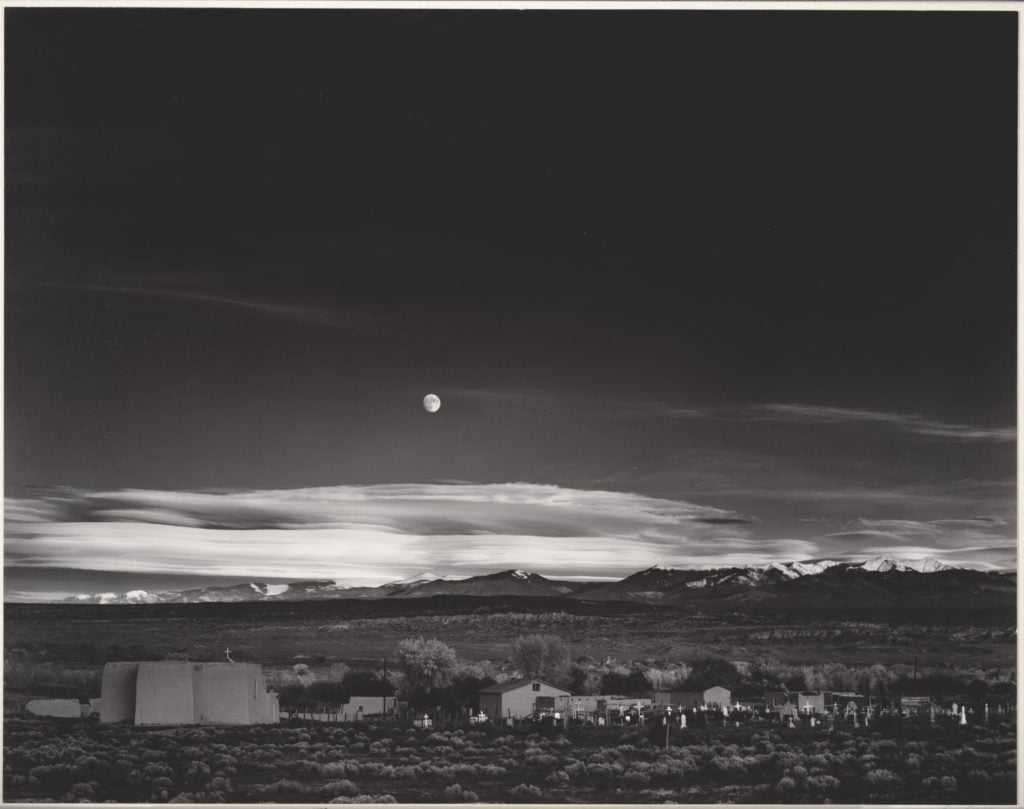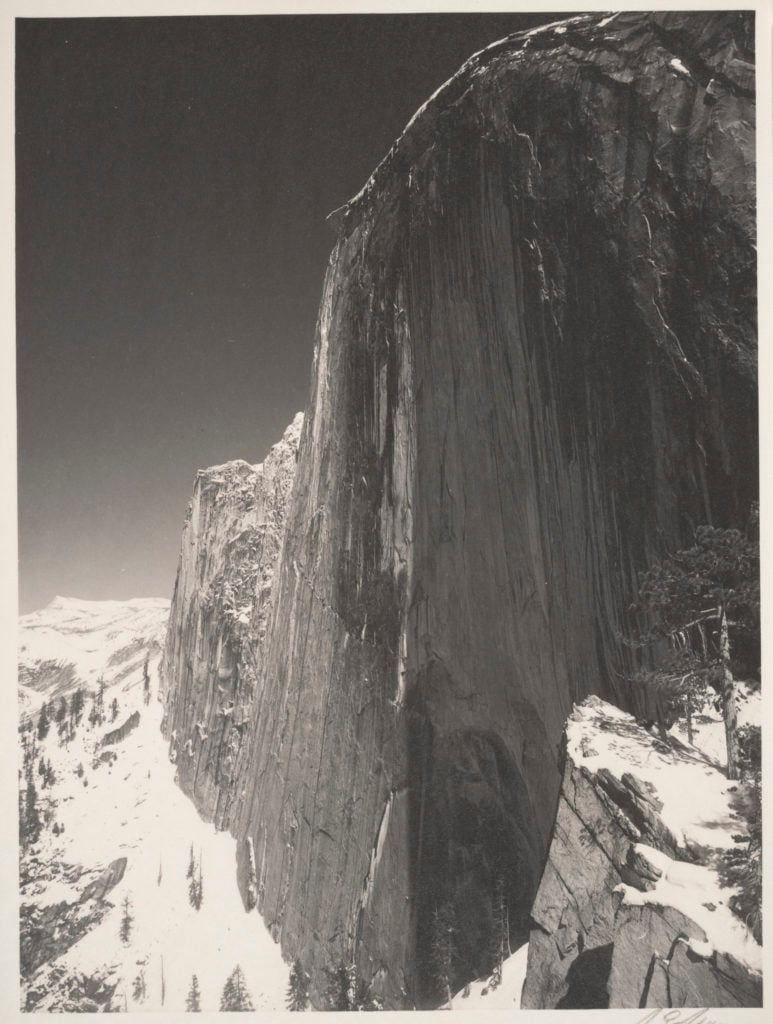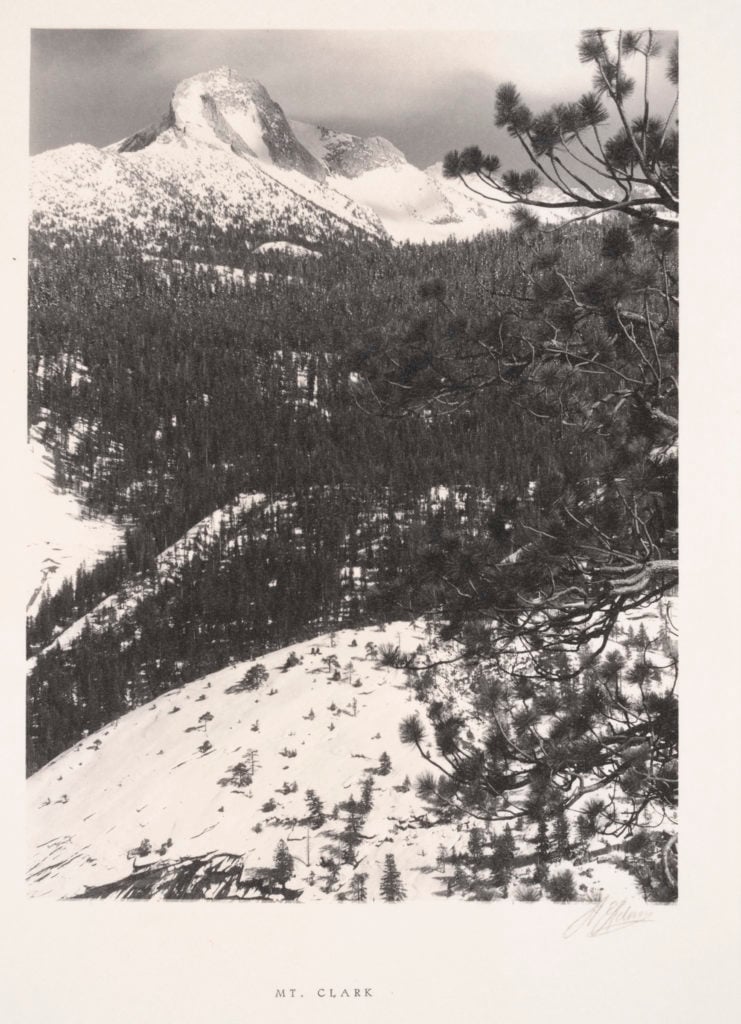On View
Rarely-Seen Early Ansel Adams Photographs Celebrate the Wonders of the West
It coincides with the centennial of the National Park Service.

It coincides with the centennial of the National Park Service.

Daniela Rios

California native Ansel Adams earned his title as a photographer of the American West with several pictures he took of Yosemite National Park. His black-and-white images are now part of the photography canon.
The Fenimore Art Museum in Cooperstown, New York will be exhibiting rarely-seen images through September 18 in a show called “Ansel Adams: Early Works,” which will feature photographs taken during the 1920s into the 1950s. This exhibition coincides with the National Park Service’s Centennial on August 25.
The photographer has two sites in California that are now in his name. According to the National Park Service, “Because of his dedication of photographing nature’s most beautiful creations, the Minarets Wilderness in the Inyo National Forest was renamed the Ansel Adams Wildnerness, and a peak within was renamed Mount Ansel Adams.”
In a 1984 interview with Mary Ellen Mark, Adams discusses the influence nature had on his work and why he chose to photograph parks and national forests. He says, “I wish I had gotten into the environmental work earlier because I think that’s a citizen’s fundamental responsibility. The channeling of creative arts in that direction has been very difficult…I think young people are pretty aware of the dangers, but they’re pessimistic…They don’t realize they have to go out and vote themselves.”
Adams’s photographs elegantly capture the texture and feel of the land, from mountain ranges to the density of the night sky. According to the museum’s press release, the exhibit will also be featuring a rare print of Moonrise, Hernandez, taken in 1941, and is noted to be a particularly striking work, “with its light gray (rather than deep black) sky with wispy clouds.”
Check it out below, along with a few other photographs from the exhibit.

Ansel Adams, Moonrise, Hernandez, New Mexico (1941). Courtesy of Fenimore Art Museum © 2015 The Ansel Adams Publishing Rights Trust.

Ansel Adams, Monolith, the Face of Half-Dome, Yosemite National Park, California (1927). Courtesy of National Park Service.
![[cliff with narrow triangular face in shadow at left, valley view]](https://news.artnet.com/app/news-upload/2016/08/The-Sentinel-Yosemite-Valley-ca.-1923-1024x768.jpg)
Ansel Adams, The Sentinel, Yosemite Valley, ca (1923). Courtesy of National Park Service.

Ansel Adams, Mount Galen Clark, Yosemite National Park (1927). Courtesy of Fenimore Art Museum © 2015 The Ansel Adams Publishing Rights Trust.
![[dark valley view without waterfall, Half Dome in center distance with pale lcloud above it, layer of pale mackerel clouds above] Do not crop, alter photograph. ALL RIGHTS RESERVED. All scans provided by the Center are solely and specifically for one-time, single use reproduction as noted on CCP Invoice and related documents. NOTE: The Center RETAINS COPYRIGHT on ALL digital reproduction FILES with embedded metadata provided from the Center's Collections (and ANY related derivatives which may be generated by client.) Scans of photographs provided by the Center for the above-detailed one-time reproduction purpose may not be digitally archived by the client, publisher, any subcontractor and/or agent who may be working on this project. All original and derivative digital copies of image files provided must be deleted from all digital storage media once the publication layout itself has been designed and archived.](https://news.artnet.com/app/news-upload/2016/08/CCP_84091086_m-1024x806.jpg)
Ansel Adams, Yosemite Valley, High Clouds, from Tunnel Esplanade, Yosemite National Park, California (1940). Courtesy of Fenimore Art Museum © 2015 The Ansel Adams Publishing Rights Trust.